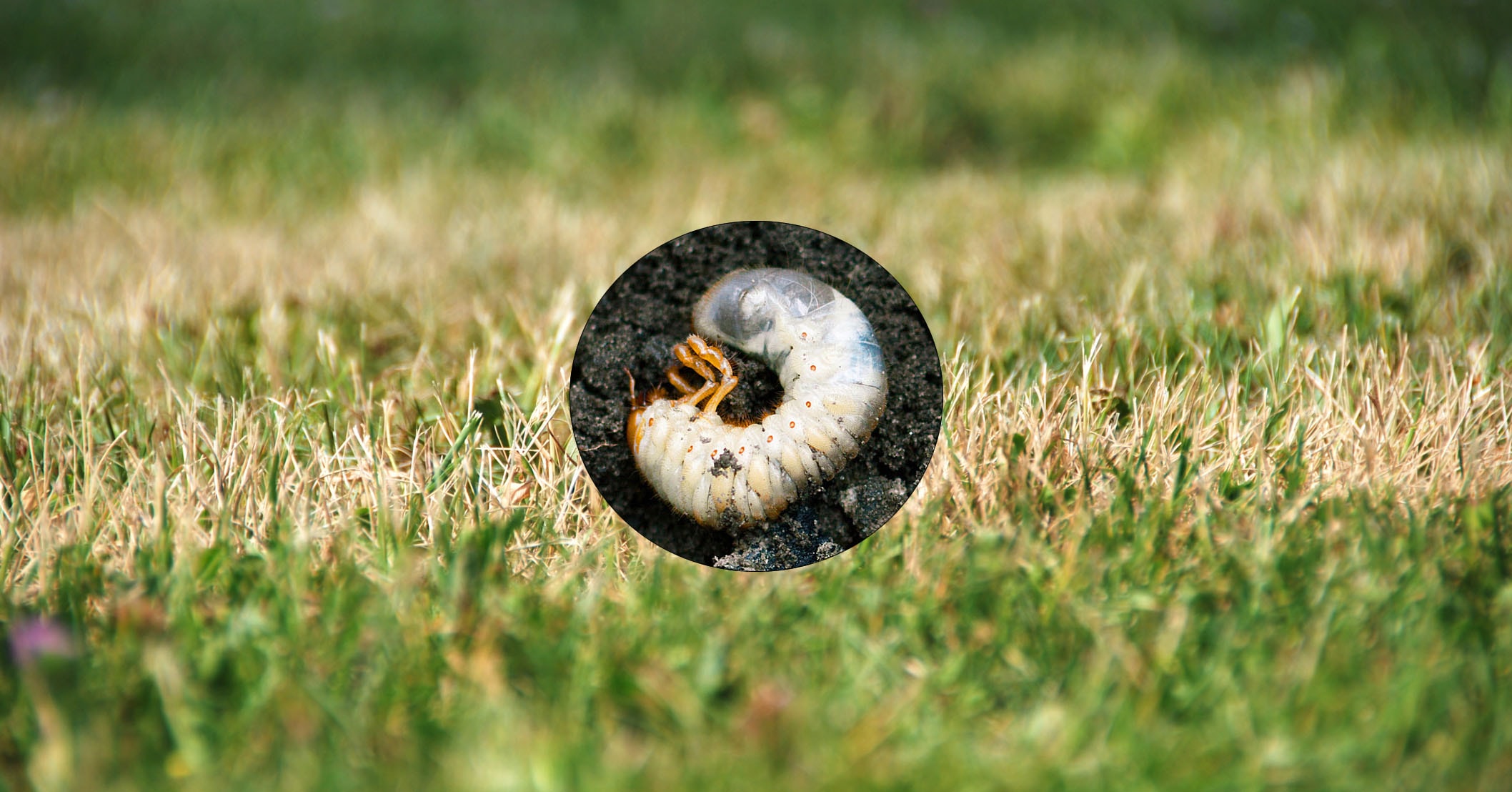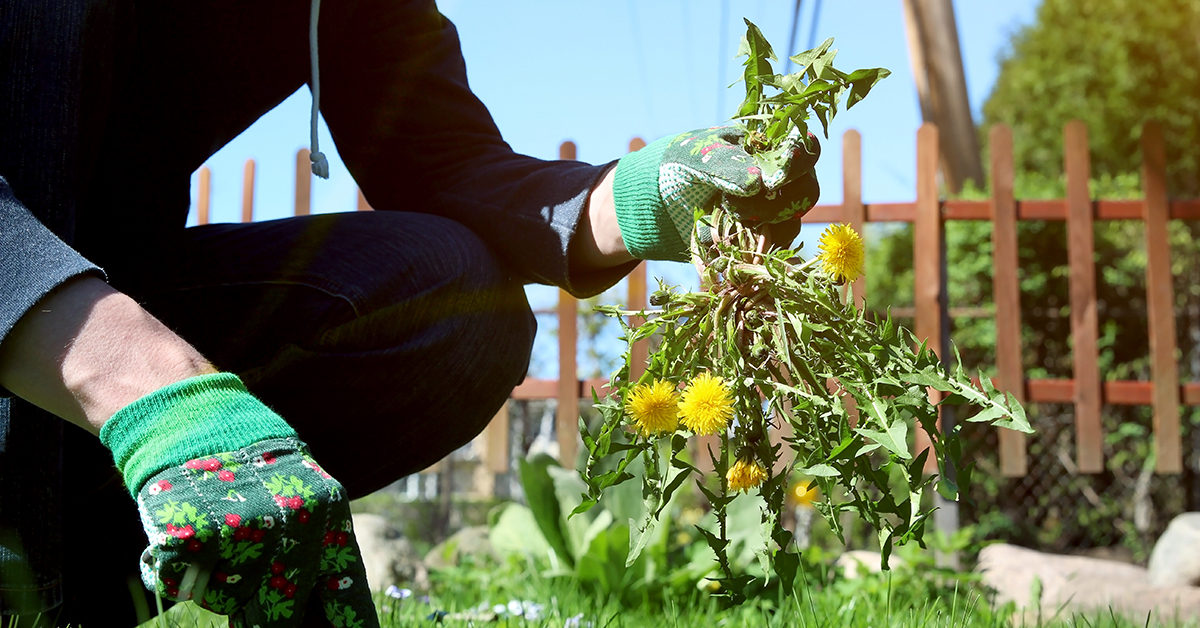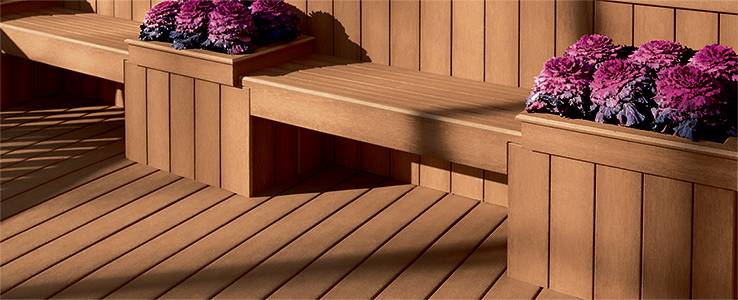![[object Object] [object Object]](/documents/ronaResponsive/SpecialPages/Projects/assets/images/template-diy/spread-fertilizer/how-to-spread-lawn-fertilizer-introduction.jpg)
Published on July 4, 2024
How to Spread Lawn Fertilizer
Homeowners have been preoccupied by the quest for the perfect lawn for a long time. One simple way to help out nature is to apply fertilizer to your yard and garden. Follow our easy step-by-step guide and discover our best lawn fertilization tips!
1Plan Fertilization
- 1.1A lawn should be fertilized during peak growth periods. In Canada, where cool-season grasses thrive, the peak growing periods are in the spring and the fall.
- 1.2Depending on the species of grass, you can apply 1 ½ to 3 lb of nitrogen per 1,000 sq. ft. of lawn a year.
Pro Tip
You should never spread more than 1 lb of fertilizer per month for 1,000 sq. ft. of lawn. Keep in mind that excessive amounts of nitrogen at one time can burn grasses.
2Collect Soil Samples
- 2.1Make a semicircular cut through the sod with a shovel or a garden edger.
- 2.2Use a garden trowel to slice a wedge of soil about 6” deep and wide from under the sod.
- 2.3Deposit the sample in a clean dry bucket and press the sod back down.
- 2.4Remove any debris, such as stones, grass, or roots, from the soil and mix the soil thoroughly.
3Analyze the Soil
More About Soil Analysis
Pro Tip
You can remedy excessive acidity (below pH 6) by adding dolomitic limestone. Overly alkaline soil (above pH 7) can be corrected with iron sulfate, aluminum sulfate or ground sulphur.
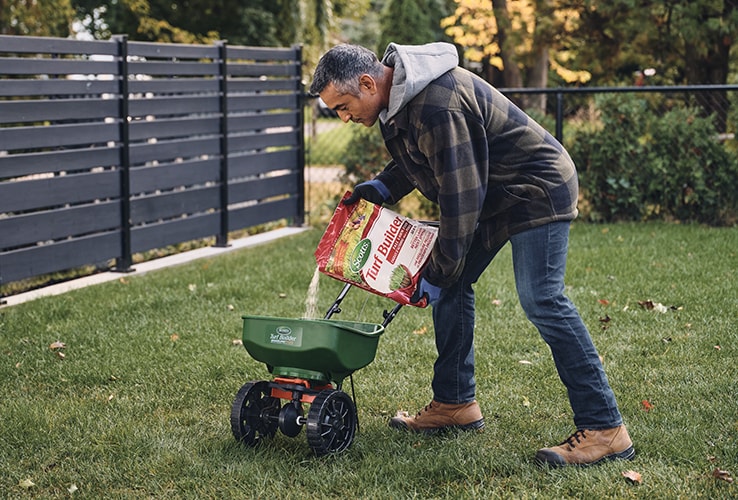
4Calculate How Much Fertilizer You Need
- 4.1If your lawn is rectangular, calculating its surface area is simple: simply multiply the length by the width.
- 4.2If the lawn is irregularly shaped, first divide it into sections that are roughly rectangular. Measure the length and width of each section, to calculate its surface area, then add the results together.
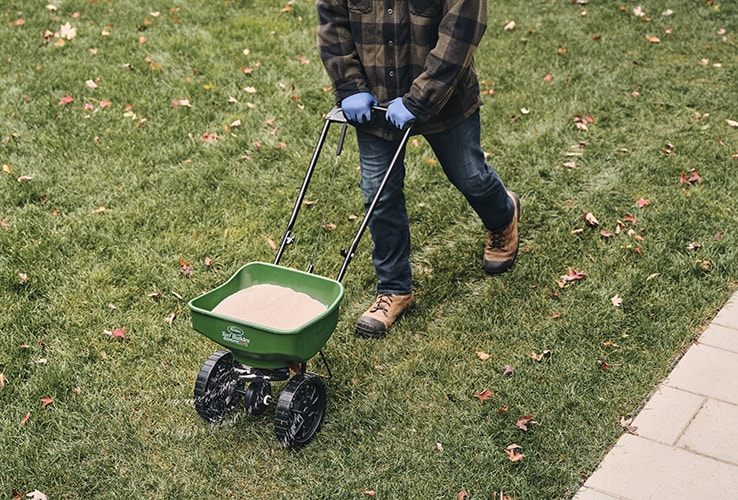
5Spread the Lawn Fertilizer
Through Spreader
Make sure the spreader holes are closed then fill the spreader body about 3/4 full.
Adjust the holes opening to the setting suggested by the manufacturer.
Wheel the spreader, with the holes closed, to a corner of the lawn. Open the holes and push the spreader at a moderate pace along one end of the lawn.
Close the holes, at the end of the row, turn the spreader around and move it over by the width of the housing. Open the holes and return to your starting point so the second pass just touches the first without overlapping it.
Cover two more end rows on the opposite side of the lawn in the same way.
Cover area between the end rows with perpendicular passes.
Broadcast Spreader
Make sure the spreader holes are closed and fill the body about 3/4.
Adjust the size of the holes as suggested by the manufacturer.
Open the holes and push the spreader a steady, moderate pace along the side of the lawn, starting at a corner. When you get to the end, turn and come back to your starting point without stopping, overlapping the 3-4’ spread of fertilizer made by the first pass by about 1’.
When you have covered the entire lawn and reached the opposite side, turn 90° and cover the lawn again so that each pass is at a right angle to the first series.
Pro Tip
Broadcast spreaders lay a lighter load of fertilizer than a trough spreader. Two passes are needed to ensure a full coverage.
Disclaimer
These DIY projects are provided for informational purposes only. The information contained in RONA’s DIYs is intended to provide general guidelines to simplify jobs around the house. Because tools, products, materials, techniques, building codes, and local regulations are continually changing, RONA inc. assumes no responsibility for the accuracy of the information contained herein and disclaims any liability for the omissions, errors, or outcome of any project. RONA inc. makes no representation on the feasibility of any project and the viewer bears all risks coming with the realization of the projects. It is the responsibility of the viewer to ensure compliance with all applicable laws, rules, codes, and regulations for a project. The viewer must always take proper safety precautions and exercise caution when taking on any project. If there is any doubt in regard to any element of a project, please consult a licensed professional.










